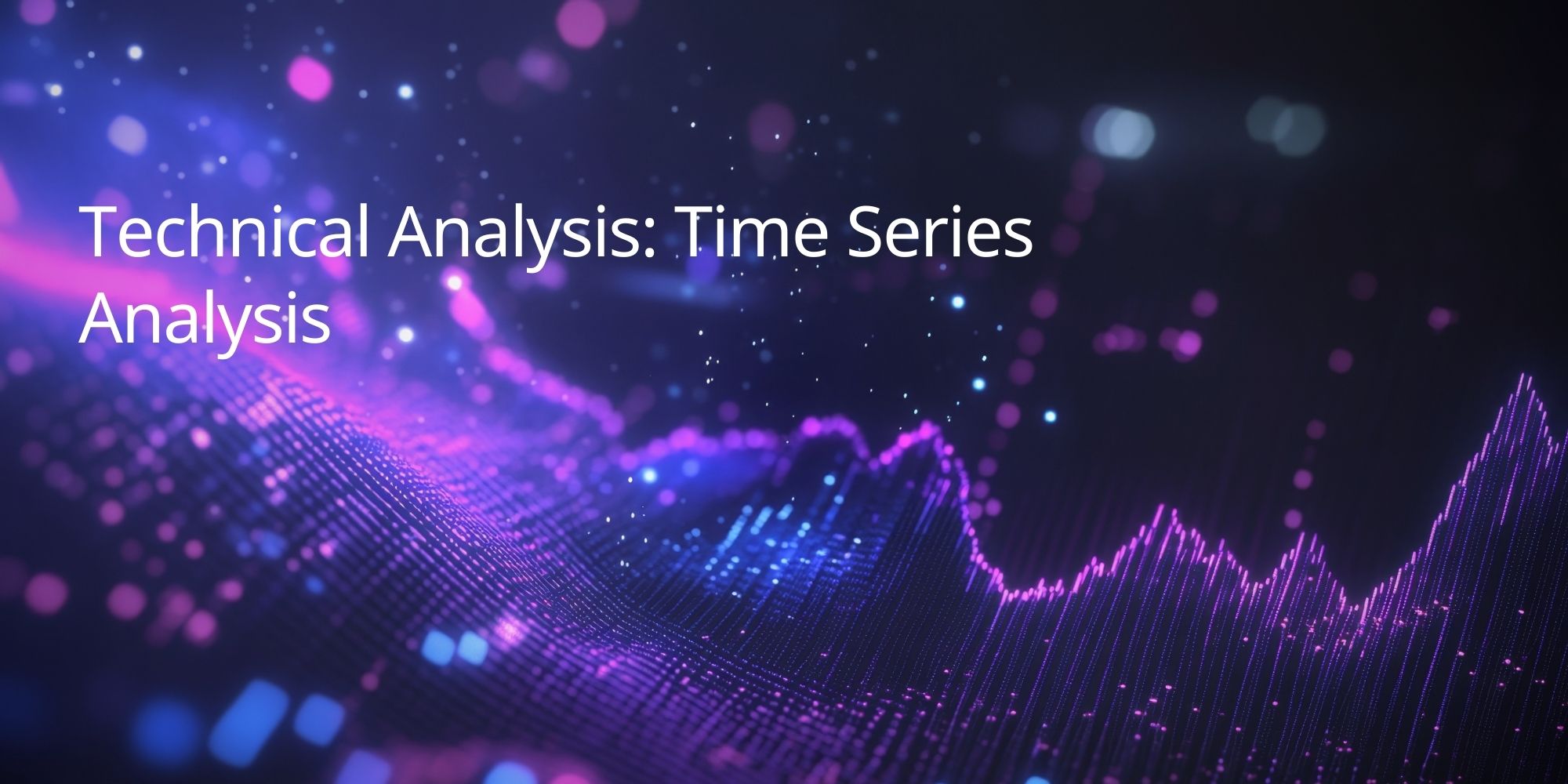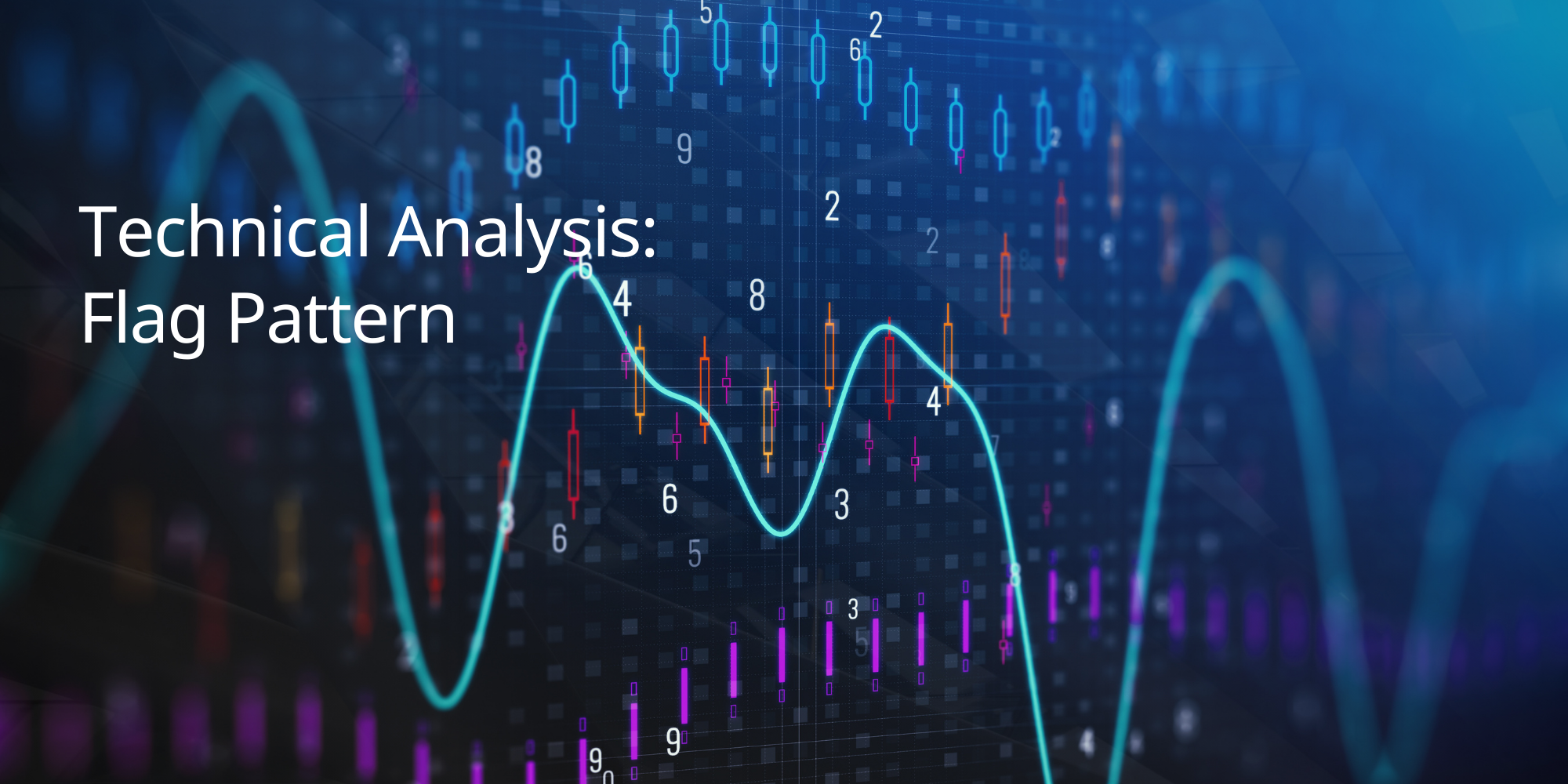Want to gain a competitive edge in forecasting price movements? By analyzing historical price patterns, traders can identify market trends and key turning points using time series analysis.
In this comprehensive guide, TradeSmart takes you through the fundamentals of time series analysis. We’ll explore its definition, purpose, benefits, limitations, practical applications, key components, and how to interpret graphical representations of time series data. Get ready to enhance your analytical skills and make more data-driven trading decisions!
What Is Time Series Analysis?
Time series analysis, often called trend analysis, is a cornerstone of technical analysis in financial markets. It involves studying a sequence of data points collected over time to identify patterns, trends, and potential future movements.
Think of it like this: your credit card statement is a time series. It shows your transactions over a specific period, arranged in chronological order. This allows you to see how your spending habits change over time.
Time series analysis can be applied to various types of data, such as sales figures, website traffic, or even the number of calls to a customer service center. In financial markets, it’s primarily used to analyze the price history of assets like stocks, forex pairs, and commodities.
By examining past price movements, traders can identify trends, seasonal patterns, and other recurring behaviors. This information can be invaluable for making informed trading decisions and predicting future price movements.
For example, time series analysis can help you:
- Identify trends: Is the price of a stock generally increasing or decreasing over time?
- Spot seasonality: Does the price of a commodity tend to rise during certain months of the year?
- Forecast future prices: Based on past patterns, what might the price of an asset be in the future?
TradeSmart provides the tools and resources required to conduct time series analysis. Our advanced trading platforms offer charting tools, technical indicators, and historical data to help you improve your trading outcomes.
How Does Time Series Analysis Work?
Time series analysis involves breaking down historical data into key components to identify patterns and make predictions. These components include:
- Trends: Long-term movements in the data, either upwards, downwards, or sideways.
- Seasonality: Regular, recurring patterns that occur within fixed periods, such as increased sales during holidays.
- Cyclical Patterns: Longer-term fluctuations that don’t have a fixed period, like economic cycles.
- Irregular Movements: Random fluctuations or noise in the data that can’t be attributed to other components.
By understanding these components, traders can gain valuable insights into market dynamics and potential future price movements. For example, identifying a strong upward trend can signal a good time to buy an asset, while recognizing seasonal patterns can help anticipate recurring price fluctuations.
What Are The Advantages Of Time Series Analysis?
Time series analysis offers several advantages for traders seeking to make informed decisions in the financial markets:
- Understanding Market Drivers: By analyzing historical data, traders can gain insights into the factors that influence price movements and how those factors might impact future trends. This understanding can help you anticipate market reactions to news events, economic releases, and other important developments.
- Effective Risk Management: Time series analysis can help you identify and manage risks associated with specific periods or seasonal patterns. For instance, if you’re trading a commodity with a history of price volatility during certain months, you can adjust your trading strategy accordingly to mitigate potential losses.
- Versatility Across Markets: Time series analysis can be applied to any financial market with historical price data. Whether you’re trading stocks, forex, commodities, or cryptocurrencies, time series analysis can provide valuable insights into market dynamics and potential trading opportunities.
- Deeper Market Understanding: By examining past price patterns and their underlying causes, you can gain a deeper understanding of how markets work and why prices move in certain ways. This knowledge can empower you to make more informed trading decisions and interpret market events more effectively.
TradeSmart encourages traders to explore the power of time series analysis. Thanks to our compatibility with the advanced trading platforms that provide the tools and resources you need to analyze historical data, you can identify trends and make informed predictions about future market movements.
What Are The Disadvantages Of Time Series Analysis?
While time series analysis is a powerful tool, it’s important to be aware of its limitations:
- Assumption of Linearity: Time series analysis often assumes that data points follow a linear pattern. However, in reality, market movements can be non-linear and unpredictable. This can lead to inaccurate predictions and misleading conclusions if the underlying data doesn’t conform to the assumptions of the model.
- Impact of Volatility and External Events: Time series analysis relies on historical data to predict future trends. However, unexpected events, such as economic crises, geopolitical shocks, or sudden shifts in market sentiment, can disrupt established patterns and render historical data less reliable. In highly volatile markets, time series analysis might struggle to capture the rapid and unpredictable price movements.
- Overfitting and Data Bias: Time series models can sometimes become too complex and “overfit” the historical data. This means they capture the noise and random fluctuations in the data rather than the underlying trends, leading to poor predictive performance on new data. Additionally, historical data can be biased or incomplete, potentially skewing the results of the analysis.
TradeSmart acknowledges these limitations and encourages traders to use time series analysis in conjunction with other tools and techniques. By combining time series insights with fundamental analysis, technical indicators, and sound risk management practices, you can mitigate these limitations and make more informed trading decisions.
Putting Time Series Analysis into Practice
To effectively use time series analysis in your trading, follow these key steps:
- Gather Data: Start by collecting relevant historical data. This might include price data, economic indicators, or any other data relevant to your analysis. Ensure the data is accurate, complete, and covers a sufficient period to identify meaningful patterns.
- Identify Patterns: Analyze the data to identify trends, seasonality, cyclical patterns, and any irregular movements. Use charting tools and visualizations to gain a clear understanding of the data’s behavior over time.
- Develop a Model: Choose an appropriate time series model to analyze the data and make predictions. This might involve using statistical methods like ARIMA or more advanced machine learning algorithms. Through the supported platforms of TradeSmart, you can benefit a range of tools and resources to support your modeling efforts.
- Make Forecasts: Use your chosen model to forecast future data points or trends. This can help you anticipate potential market movements and make informed trading decisions.
- Validate and Refine: Continuously validate your model’s performance and refine it as needed. Compare your forecasts to actual market outcomes and adjust your model to improve its accuracy.
Remember that time series analysis is most effective when used in conjunction with other analytical tools. Combine your time series insights with technical indicators, fundamental analysis, and sound risk management practices for a comprehensive trading approach.
H3: Breaking Down the Components of Time Series Analysis
Time series analysis involves identifying distinct patterns within historical data. These patterns can be broadly categorized into four components:
1. Trends: A trend represents a long-term direction in the data. In financial markets, this could be a sustained upward or downward movement in price over a significant period. Identifying trends is crucial for understanding the overall direction of the market and making informed trading decisions.
2. Seasonal Variations: Seasonality refers to recurring patterns that occur at regular intervals, often within a year. For example, the price of heating oil might consistently rise in the winter months due to increased demand. Recognizing seasonal patterns can help traders anticipate predictable price fluctuations.
3. Cyclical Components: Cyclical patterns are longer-term fluctuations that don’t have a fixed time frame, unlike seasonality. Economic cycles, for instance, can influence market trends over several years. Identifying cyclical patterns can provide insights into broader market forces and potential turning points.
4. Random Movements: Random movements, or “noise,” are unpredictable fluctuations in the data that don’t fit into the other categories. These might be caused by unexpected events, news announcements, or short-term market volatility. While these movements can create short-term price swings, they generally don’t alter the overall trend.
H3: How Are Graphs And Charts Used In Time Series Analysis?
Charts and graphs are essential tools for time series analysis, providing a visual representation of historical data and making it easier to identify patterns and trends. Here’s how they can be used effectively:
- Understanding Price Movements: Charts allow traders to visualize the price history of an asset, making it easier to identify short-term fluctuations and long-term trends. This visual representation can help you grasp the overall direction of the market and spot potential turning points.
- Supporting Technical Analysis: Charts can be combined with various technical indicators to enhance your analysis. For example, overlaying moving averages on a price chart can help confirm the direction of a trend or identify potential support and resistance levels.
- Analyzing Seasonal Patterns: Charts can be used to analyze seasonal variations in price data. By marking specific periods on the chart, such as the start of each season, you can visually identify recurring patterns and anticipate potential price movements based on historical trends.
- Gaining a Historical Perspective: Charts provide access to a wealth of historical data, allowing traders to analyze long-term trends and identify recurring patterns over time. This historical perspective can provide valuable context for understanding current market conditions and making informed trading decisions.
Frequently Asked Questions
Q: Can time series analysis be used for all financial instruments?
A: Yes, time series analysis can be applied to any financial instrument with historical price data. This includes stocks, bonds, forex pairs, commodities, indices, and cryptocurrencies.
Q: How do external events affect the results of time series analysis?
A: Unexpected events, such as economic crises, geopolitical shocks, or natural disasters, can disrupt established patterns and make historical data less reliable for predicting future trends. It’s important to consider these external factors and adjust your analysis accordingly.
Q: Can time series analysis alone guarantee successful trading outcomes?
A: No. While time series analysis can provide valuable insights into market trends and potential trading opportunities, it’s not a guarantee of success. Profitable trading depends on various factors, including risk management, market knowledge, and psychological discipline.
Q: How important is data frequency in time series analysis for trading?
A: The frequency of your data (e.g., minute-by-minute, daily, weekly) should align with your trading style and objectives. High-frequency data is useful for short-term trading, while lower-frequency data is better suited for long-term trend analysis.
Start Trading




